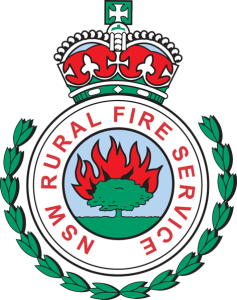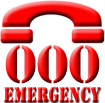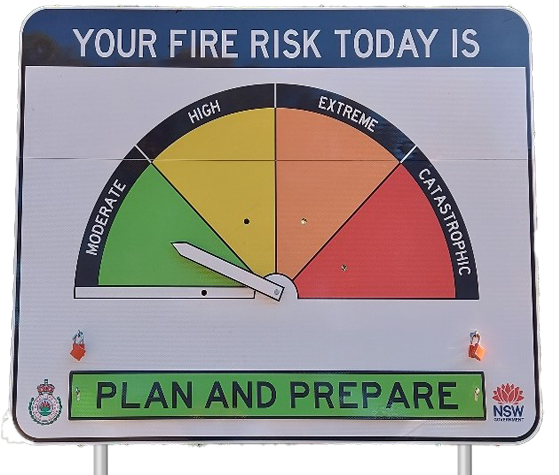SURVIVE!
Bush fires are a natural part of the Australian environment and occur regularly, but many people fail to prepare for them. When threatened by bush fires, people will often leave it too late to make critical decisions and often have few safe options left.
Canyonleigh is located in one of the more at-risk areas of the Southern Highlands. As we say: “one road in – one road out’. In the event of a fire, you may be trapped in the area without any safe exit routes. Best advice? Leave early if fire threatens.
The following links take you to pages on the NSW Rural Fire Service website that provide important information that will greatly enhance the likelihood of the survival of your family, friends and yourself in the event of a bushfire. That’s why you need to PREPARE. ACT. SURVIVE.
Click on the buttons below to find out more!

The following selections are a VERY SMALL subset of the information available on the NSW RURAL FIRE SERVICE website www.rfs.nsw.gov.au. We urge you to spend time reviewing their site.
Plan and Prepare
Bush fire is a part of life in New South Wales. So you need to live bush fire ready.
That means knowing your risk and having a plan for what to do during a fire.
You can make your plan online in as little as five minutes at www.myfireplan.com.au or you can sit down with your family and discuss what you will do using our guide to making a bush fire survival plan
Hazards Near Me
Displays all bush and grass fires attended by fire services in NSW and other incidents attended by NSW RFS volunteers.
Understand the Fire Ratings
Fire Danger Ratings give you an indication of the consequences of a fire, if one was to start.
The higher the fire danger rating, the more dangerous the conditions.
You can use the Fire Danger Ratings as a trigger for action in your bush fire survival plan, such as leaving bush fire risk areas on days of Extreme or Catastrophic fire danger.
Fire Danger Ratings and Total Fire Bans in NSW
Fire danger ratings and total fire bans are determined each afternoon for the following day. If ‘forecast ratings’ is shown, this is an indication only and you should check back later for when the ratings are finalised.
Volunteer
The NSW Rural Fire Service (NSW RFS) is the world’s largest volunteer fire service, made up of more than 70,000 dedicated volunteers right across NSW.
NSW RFS volunteers are ready to respond to emergencies 24 hours a day, 7 days a week, all year round, attending a range of incidents from bush and grass fires to house and structure fires, road accidents and assisting at other events like floods, storms and searches.
For many of our members, it’s also about being part of a wonderful tradition and an organisation with a very proud history.
Planned Hazard Reductions
Hazard reduction is just one way of preparing for bush fires – it doesn’t remove the threat of fire, and it doesn’t remove the need for you and your family to be prepared.
There are different types of hazard reduction including controlled burning, mechanical clearing like slashing undergrowth, or even reducing the ground fuel by hand.
Know YOUR risk
Living with the bush is part of living in New South Wales – but so is living with the risk of fire.
A bush or grass fire can happen at any time of the year but the risk is higher during the warmer months, when bush, grass or scrub is drier.
You don’t have to live right near the bush to be at risk. Even if your home is a few streets back, you may be at risk.
Home fire safety
House fires can happen at any time of the year. Just like bush or grass fires, the key to surviving a house fire is being prepared.
There are some simple steps you can follow to reduce your risk of a fire in your home.

